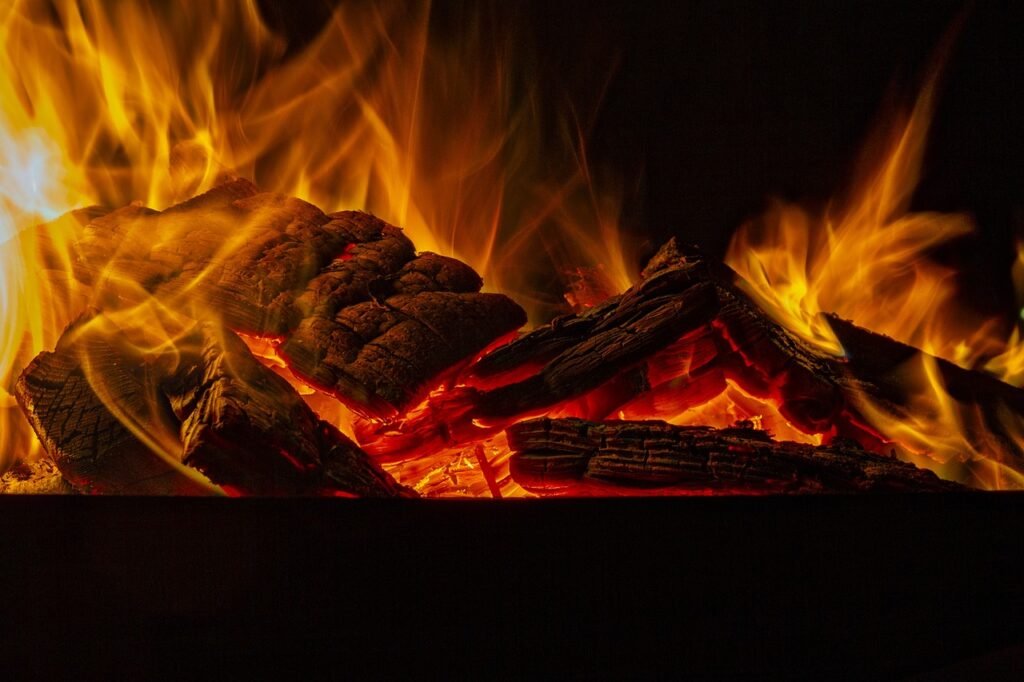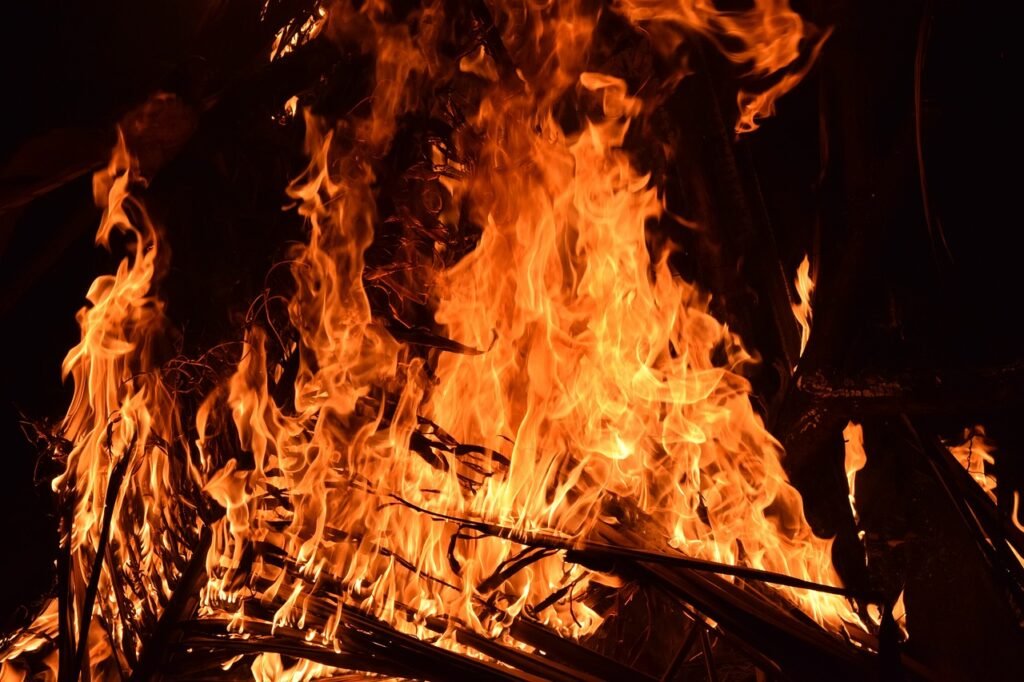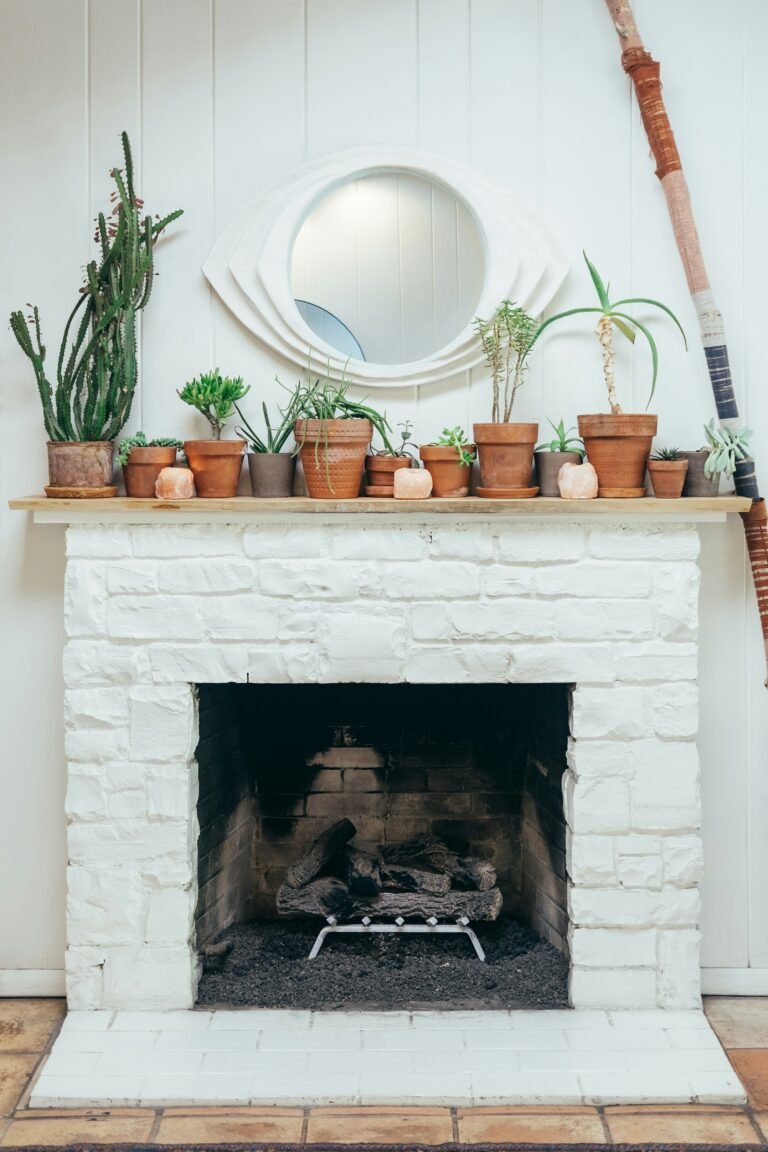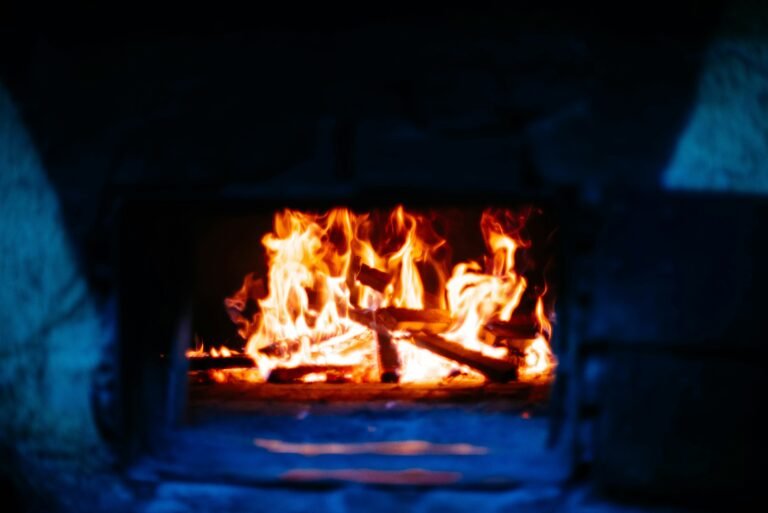Imagine cozy winter nights spent around a crackling fire, the warm glow flickering against the faces of loved ones. Now, picture yourself as the mastermind behind that inviting fireplace, a testament to your creativity and craftsmanship. In this article, we will explore how you can ignite your creativity with easy DIY fireplace projects. From transforming an old non-functioning fireplace into a stunning focal point, to creating decorative firewood storage solutions, these projects will not only add warmth to your home but also spark your imagination and leave you with a sense of accomplishment. Get ready to bring your vision to life and turn your living space into a haven of comfort and creativity.
Choosing the Right DIY Fireplace Project
When embarking on a DIY fireplace project, it is essential to consider your space and budget. Assess the size of the area where you plan to install the fireplace and determine if it can accommodate the desired design. Additionally, setting a budget can help you narrow down your options and ensure you don’t overspend.
Alongside space and budget considerations, it is crucial to evaluate your skill level. DIY fireplace projects can range from simple to complex, so be honest with yourself about your abilities. If you have limited experience with construction or masonry work, it may be best to start with a more straightforward project before tackling a larger-scale fireplace.
Researching different fireplace designs is another crucial step in the process. Take the time to explore various options, such as traditional wood-burning fireplaces, gas fireplaces, or electric fireplaces. Consider the pros and cons of each type, including their heat output, fuel requirements, and maintenance needs, to determine which design suits your preferences and lifestyle.
Lastly, don’t forget to factor in maintenance requirements when choosing a DIY fireplace project. Some fireplaces require regular cleaning and upkeep, while others may have fewer maintenance demands. Consider your time and commitment level and opt for a fireplace that aligns with your willingness to invest in its upkeep.
Gathering Necessary Tools and Materials
Before diving into your DIY fireplace project, it’s important to ensure you have all the necessary tools and materials. Here is a list of common tools you may need:
- Tape measure
- Level
- Hammer
- Chisel
- Masonry trowel
- Drill
- Saw (circular or reciprocating)
- Gloves
- Safety goggles
In terms of materials, they will vary depending on the type of fireplace you choose to build. However, some common materials include firebrick, mortar, concrete blocks, steel lintels, and insulation.
While it’s essential to gather all the required tools and materials, it is also worth considering affordable options. Compare prices at different suppliers and look for deals or discounts. Saving money on materials can help keep your project within budget without compromising on quality.
Another critical decision to make is determining the fuel source for your fireplace. Wood, gas, and electricity are the most common options. Each fuel source has its advantages and considerations. For example, wood-burning fireplaces provide an authentic ambiance but may require more maintenance and produce more smoke. Gas fireplaces are convenient and clean-burning, but they require access to a gas line. Electric fireplaces are easy to install and maintain, but they may lack the same level of heat output as wood or gas fireplaces. Consider your preferences, availability of fuel, and local regulations when choosing the right fuel source.

This image is property of pixabay.com.
Creating a DIY Fireplace Design
Designing your DIY fireplace is an exciting step in the process. To start, determine the ideal location for your fireplace. Consider factors such as the layout of the room, proximity to combustible materials, and ventilation needs. Ensure there is enough space for the fireplace and that it will be a focal point in the room.
Next, choose the type of fireplace that best fits your needs and design preferences. Options include traditional fireplaces, fireplace inserts, or wall-mounted electric fireplaces. Traditional fireplaces often require a masonry structure, while fireplace inserts slide into existing fireplaces. Wall-mounted electric fireplaces offer flexibility in terms of installation and design.
Safety is of utmost importance when creating a DIY fireplace design. Follow local building codes and regulations regarding clearances from combustible materials and required ventilation. Research about fire safety precautions and choose fire-resistant materials for the surrounding walls and floors.
Once you have a clear vision of your DIY fireplace design, it’s helpful to sketch it out. This will give you a visual representation of how the finished fireplace will look. Include measurements, dimensions, and any specific details you want to incorporate, such as a decorative mantel or unique tile patterns.
Building the DIY Fireplace Structure
The construction of the fireplace structure involves several key steps. First, prepare the foundation. Depending on your fireplace design, this may involve digging out and pouring a concrete footing or creating a non-combustible base, such as a metal frame.
Next, construct the firebox, the area where the actual fire will be contained. Use firebrick and refractory mortar to ensure the firebox can withstand high temperatures. Pay attention to proper firebox sizing and construction techniques to ensure optimal heat distribution and safety.
Building the chimney or flue is another crucial aspect of the DIY fireplace structure. Properly-sized and constructed chimneys or flues are essential to allow smoke and gases to escape safely. Consider consulting a professional or researching local building codes to ensure compliance and safety.
Once the firebox and chimney are in place, it’s essential to install insulation and firebrick. Insulation helps retain heat and improve the efficiency of your fireplace. Firebrick provides a fire-resistant lining for the interior walls of the firebox, increasing its longevity and safety.

This image is property of pixabay.com.
Customizing the Fireplace Surround
The fireplace surround plays a significant role in the overall aesthetic of your DIY fireplace. Selecting the right materials is key to achieving the desired look and feel. Options range from traditional brick to contemporary tiles or even reclaimed wood.
When exploring creative finishes, think about the style of the room and the atmosphere you want to create. A rustic stone surround can bring a cozy and traditional charm, while sleek tiles or a modern concrete finish can add a contemporary touch. Consider the existing decor in the room and choose materials that complement the overall design.
Incorporating decorative elements can further enhance the look of the fireplace surround. From ornate mantels to intricate tile patterns, there are endless possibilities for customization. Pay attention to details and choose elements that reflect your personality and style.
Additionally, consider adding shelves or mantels to the fireplace surround. These functional and decorative features provide a space to display artwork, photographs, or other cherished items. Ensure they are securely installed and properly spaced from the heat source to prevent any fire hazards.
Choosing the Right Fireplace Accessories
To complete your DIY fireplace project, don’t forget to choose the right accessories. Fire tools and screens are essential for fire safety and convenience. Select a set of fire tools that includes a poker, shovel, brush, and tongs. In terms of screens, choose one that fits your fireplace size and provides a barrier to protect against sparks and embers.
If you have a wood-burning fireplace, a fireplace grate or insert can enhance its functionality. These accessories elevate the wood and promote better airflow, allowing for a more efficient and controlled burn.
Outdoor fireplace accessories can extend your fireplace enjoyment to the outdoors. Consider items such as fire pit cooking grates, seating options, or weather-resistant covers to protect your fireplace from the elements.
In addition to functional accessories, decorative items can add the perfect finishing touches to your DIY fireplace. From stylish candleholders to artwork or plants, these accessories can enhance the ambiance of your space and complement the overall design.

This image is property of pixabay.com.
Installing the DIY Fireplace
Before starting the installation process, it is crucial to check local building codes. Different areas may have specific regulations regarding ventilation, clearances, and fuel sources. Ensure you are familiar with these requirements to ensure a safe and compliant installation.
In some cases, you may need to secure necessary permits before starting the installation. Check with your local municipality or building department to determine if any permits are required. Following the proper permit process can save you from potential fines or complications in the future.
Once you have obtained the necessary permits, you can begin assembling the fireplace components. Follow the manufacturer’s instructions carefully for a smooth installation. Pay attention to details such as proper venting, gas or electrical connections, and any specific requirements outlined by the manufacturer.
Once the installation is complete, it is crucial to test the fireplace for safety and functionality. Ensure all connections are secure, and there are no leaks or malfunctions. Conduct a trial run to observe the flame performance, heat distribution, and overall functionality of the fireplace. If any issues arise, consult the manufacturer or a professional for assistance.
Maintaining and Cleaning Your DIY Fireplace
Proper maintenance and cleaning are essential for the longevity and efficiency of your DIY fireplace. Regularly cleaning the fireplace and chimney helps prevent the buildup of soot and creosote, reducing the risk of chimney fires. Use appropriate brushes and tools to remove debris and perform an annual chimney inspection to identify any potential issues.
Inspecting and repairing any damages promptly is crucial to ensure the safety and functionality of your fireplace. Look for cracks in the firebricks, loose mortar joints, or signs of water damage. Address these issues promptly to prevent further damage or potential hazards.
Maintaining proper airflow and ventilation is essential for the optimal performance of your fireplace. Ensure vents are clean and unobstructed, and the flue or chimney is clear of debris. Improper airflow can lead to smoke issues, poor draft, or even carbon monoxide buildup. If you notice any problems with airflow, consult a professional for assistance.
Additionally, storing and handling fuel properly is crucial for safety and fire prevention. Whether you have a wood-burning fireplace or use gas or electric, store the fuel in a dry and well-ventilated area away from the fireplace and any ignition sources. Follow any manufacturer recommendations or local regulations regarding fuel storage and handling.
Ensuring Safety with DIY Fireplaces
Safety should be a top priority when it comes to DIY fireplaces. Installing smoke and carbon monoxide detectors in proximity to the fireplace can provide an early warning in case of a fire or a carbon monoxide leak. Regularly test and replace batteries to ensure the detectors are functional.
Practicing fire safety precautions is essential to prevent accidents and ensure the well-being of your household. Keep flammable materials at a safe distance from the fireplace and ensure the area around the fireplace is clear. Educate family members on fire safety, including how to safely use the fireplace and what to do in case of an emergency.
Using fire-resistant materials in the construction and customization of your DIY fireplace is essential for safety. Fire-resistant materials can withstand high temperatures and reduce the risk of fire spreading to surrounding areas. When selecting materials, confirm their fire resistance ratings and choose those that meet safety standards.
Educating family members on fireplace safety is crucial to prevent accidents and injuries. Ensure everyone in your household knows how to safely operate the fireplace, what precautions to take, and how to respond in case of an emergency. Regularly communicate and reinforce these safety practices to maintain a safe environment.
Troubleshooting Common Fireplace Issues
With any fireplace, it is common to encounter occasional issues. Addressing these issues promptly can prevent more significant problems down the line. Here are some common fireplace issues and how to troubleshoot them:
Addressing poor draft or smoke issues:
- Ensure the chimney or flue is clean and free of obstructions.
- Make sure the damper is properly open or closed.
- Check for air leaks around the fireplace structure.
- Consult a professional if issues persist.
Fixing chimney leaks and cracks:
- Inspect the chimney for any visible cracks or signs of moisture.
- Apply appropriate sealants or repair methods to address leaks.
- Consider consulting a professional for more extensive repairs.
Dealing with excessive creosote build-up:
- Regularly clean the fireplace and chimney to remove creosote buildup.
- Use proper brushes and tools to effectively remove creosote.
- Consider burning seasoned wood and avoiding slow-burning fires to reduce creosote formation.
Resolving ignition and fuel-related problems:
- If using a wood-burning fireplace, ensure the wood is properly seasoned and dry.
- Check for any blockages in the gas line or electrical connections for gas or electric fireplaces.
- Confirm that the pilot light is functioning correctly for gas fireplaces.
- Consult the manufacturer or a professional for assistance if issues persist.
By taking a proactive approach and addressing these common fireplace issues, you can ensure that your DIY fireplace continues to provide warmth, comfort, and a cozy ambiance for years to come.
In conclusion, DIY fireplace projects offer an opportunity to add beauty and functionality to your home while expressing your creativity. By considering your space, budget, and skill level, researching different designs, and understanding maintenance requirements, you can choose the right DIY fireplace project for you. Gathering the necessary tools and materials, customizing the design, and building the fireplace structure are essential steps in the process. Choosing the right accessories, installing the fireplace following local regulations, and maintaining and cleaning it regularly will guarantee safety and longevity. By troubleshooting common issues and prioritizing safety precautions, you can enjoy the warmth and charm of your DIY fireplace project with peace of mind.




